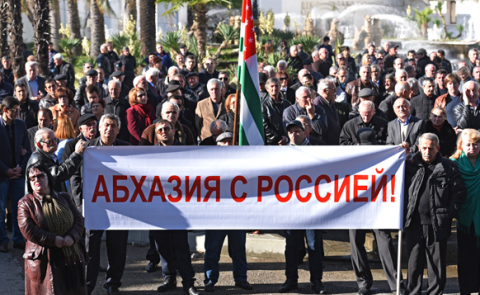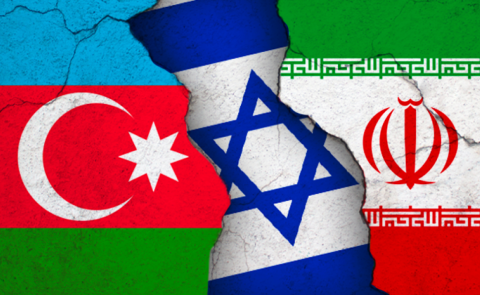
Azerbaijan at a Trade Intersection between the East and the West
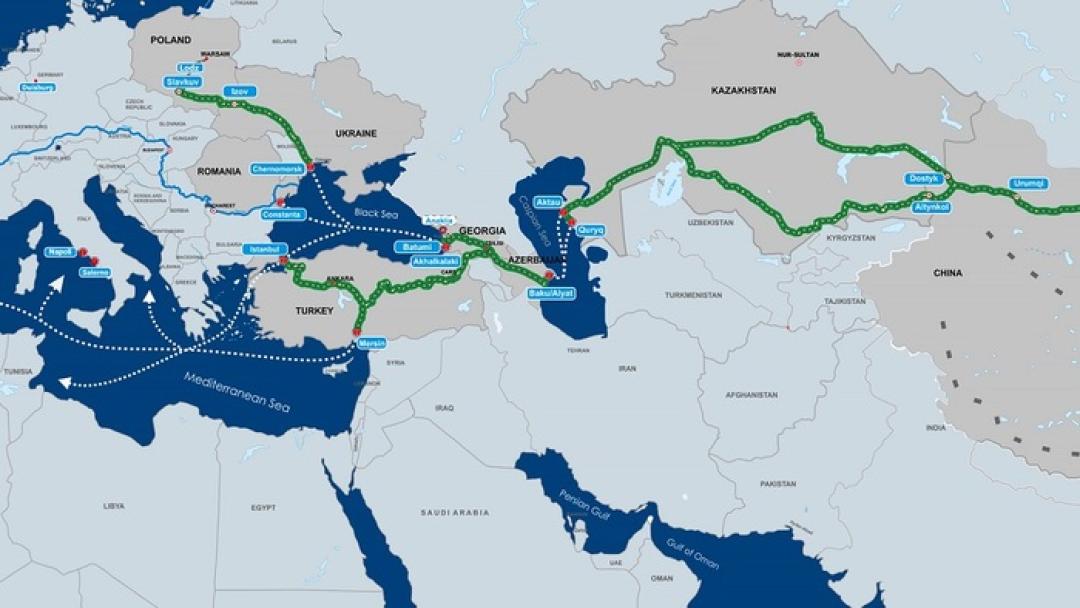
Yunis Sharifli is a Research Assistant at the Middle East Institute. He also works as a Junior Research Fellow at the Caucasian Center for International Relations and Strategic Studies (QAFSAM) and at the Topchubashov Center in Azerbaijan.
Since the Russia-Ukraine war began, states and international companies have faced challenges to use the Northern Corridor, which passes through Russian territory, for sending their cargo from China to the EU. Due to the sanctions on Russia and the increasing uncertainty and complexity of Russia’s business environment, companies, particularly European companies, try to find alternative railway routes.
In this context, one of the attractive options between different corridors seems to be the Trans-Caspian East-West-Middle Corridor Initiative, shortly named “The Middle Corridor”. The Middle Corridor which begins from Türkiye and passes through the Caucasus region via Georgia, and Azerbaijan, crosses the Caspian Sea and reaches China by following the Turkmenistan-Uzbekistan-Kyrgyzstan or Kazakhstan route. Since the beginning of the war, cargo transportation through the Middle Corridor has increased rapidly. According to the new statistics, in the first half of this year, cargo transportation through the Middle Corridor increased by 15% compared to the same period last year. Despite the fact that the corridor still accounts for 3-5% of percent of total cargo volume between China-EU rail trade, there are assumed that approximately 10 percent of that volume could easily be transported through the corridor.
Despite the increasing attention of states and international companies to The Middle Corridor, there are different challenges that slow cargo transportation. In terms of hard infrastructure, limited port capacity in the Caspian Sea and the Black Sea and a shortage of ferries create bottlenecks and congestion processes. In terms of soft infrastructure, slow development of reducing tariffs and the absence of unified regulations and technical standards unifying custom systems also increase the time-consuming and cost of cargoes.
In order to solve these problems, corridor countries invest in their infrastructure. In this context, Azerbaijan’s transportation policy plays a key role in The Middle Corridor because Baku tries to develop both hard and soft infrastructure throughout the country and also use both bilateral and trilateral platforms with different corridor countries for optimizing the corridor's potential. In terms of the development of infrastructure, Azerbaijan needs to improve Baku International Sea Port’s capacity and also get new ferries for handling more cargo. During the first 6 months of this year, a significant increase was observed in the number of wagons transported through Baku Port. If during the first six months of last year, 14,603 wagons were transported in Baku Port, this indicator increased by 25.8% to 18,376 in the same period of year. There is already information that in the next 2-3 years, the port can reach its maximum capacity.
However, Baku has already started to improve and strengthen its port capacity. Firstly, when the development of the second phase of the port is complete, it can handle 25 million tons of cargo and 500,000 twenty-foot equivalent unit (TEU) containers. Secondly, the construction of a new fertilizer terminal with an annual loading capacity of 2.5 million tons and fertilizer warehouses with a capacity of 60,000 tons is also another important development that increases the port's capacity for attracting more cargo. Finally, the announcement of a new roll-on/roll-off (Ro-Ro) terminal in Baku Port will help to facilitate the transportation process and reduce time consumption. In addition to improving port capacity, Azerbaijan also tries to increase the number of vessels and ferries in both the Caspian Sea and the Black Sea to strengthen multi-modal transportation through the Middle Corridor. As an example, The Azerbaijan Railway Company’s (ADY) decision to add a second vessel to transport goods through the Black Sea shows that Baku does not just try to develop corridor efficiency in the country but also tries to contribute to the overall development of the Middle Corridor.
Along with hard infrastructure, Baku is also improving its soft infrastructure. As an example, Azerbaijan's decision to establish a single center for transit cargo management will simplify and digitize customs procedures from Baku Port to border areas. As a result of this decision, time consumption will be reduced, transparency will increase, and the calculation of the arrival time of cargo will be more accurate.
In addition to the current infrastructure, the future opening of the Zangezur Corridor also may increase Azerbaijan’s strategic importance through the Middle Corridor because the new railway route will increase Azerbaijan’s cargo handling capacity and create more options for international companies to send their cargos from China to the EU.
Despite new improvements in infrastructure in the country, Baku also needs to coordinate with other corridor countries in order to optimize The Middle Corridor's potential. In this context, Azerbaijan uses both bilateral and trilateral platforms for coordinating with other countries. At this point, Azerbaijan's relationship with Georgia and Türkiye is an important factor in strengthening the South Caucasus part of The Middle Corridor. As a result of Azerbaijan's coordination with two countries at both bilateral and trilateral levels, they discuss optimizing the Baku-Tbilisi-Kars Railway (BTK) and boosting cargo flows. Moreover, the three countries reached an agreement on custom procedure simplification. This agreement can lead to fast and efficient goods transportation and accelerated border crossing.
In addition to the development of relations with Türkiye and Georgia, Azerbaijan also cooperates with both Kazakhstan and Uzbekistan for strengthening the Central Asian part of The Middle Corridor. The recent visit of Azerbaijani President Ilham Aliyev to Uzbekistan marked a new stage in the logistics and transport sector between Uzbekistan and Azerbaijan. Particularly, the recent decision to construct the China-Kyrgyzstan-Uzbekistan (CKU) railway creates new opportunities for Baku and Tashkent in order to improve connectivity through East-West trade and diversify routes. In addition to bilateral relations, Azerbaijan works with both Uzbekistan and Türkiye at the trilateral level. As a result of coordination, three countries signed the Tashkent Declaration, and one of the targets of the declaration is to reduce tariffs and boost cargo flows.
Finally, Azerbaijan also improves its relations with Kazakhstan at the bilateral and trilateral levels. During the recent visit of Kazakhstan President Kassym-Jomart Tokayev to Azerbaijan, the two sides signed strategic cooperation deals that include logistical cooperation and reinforcement of regional connectivity. Moreover, during the trilateral meeting of Azerbaijan, Kazakhstan, and Türkiye, the sides discussed enhancing regional cooperation and increasing the potential of The Middle Corridor.
To sum up, despite The Middle Corridor's different problems, Baku tries to invest in both hard and soft infrastructure to enhance efficient transportation through Azerbaijan. In addition, it also cooperates with The Middle Corridor countries at both bilateral and trilateral levels for improving connectivity, reducing tariffs, eliminating bottleneck problems, and simplifying customs procedures. In the short term, Azerbaijan's cooperation with corridor countries may promote attracting more cargo from the Northern Corridor. In the medium and long term, cooperation may lead to the unification of the custom system and solution of congestion problems and maximize the potential of The Middle Corridor.
See Also

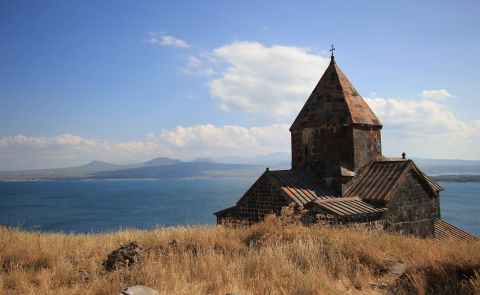
From Neorealism to Neoliberalism: Armenia’s Strategic Pivot in Foreign Policy After the Nagorno-Karabakh Conflict
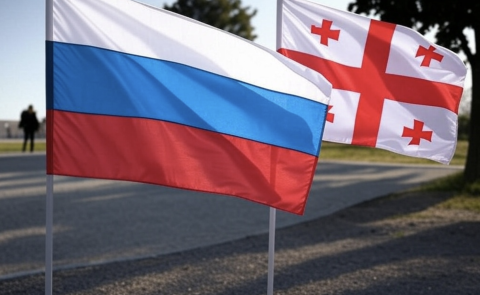
Georgia and Russia: New Turn in Bilateral Relations
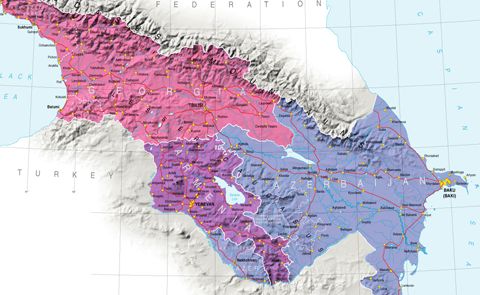
3+3 Initiative as a New Order in the South Caucasus
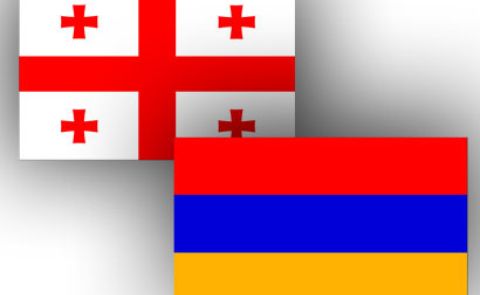
Economic Cooperation Between Armenia and Georgia: Potential and Challenges Ahead
